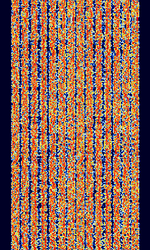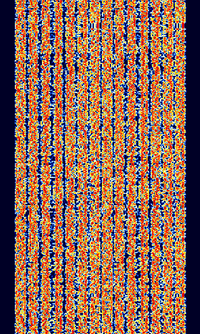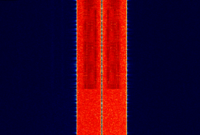FreeDV COHPSK
FreeDV Coherent PSKPhase-Shift Keying (Also known as FreeDV 700) is a robust Digital Voice mode developed by David Rowe for his FreeDV Digital Voice Software. The 14-subcarrier QPSKQuadrature Phase-Shift Keying (2 bits per symbol) mode uses pilot symbol assisted coherent PSKPhase-Shift Keying, whereas FDMDV uses differential PSKPhase-Shift Keying. Coherent PSKPhase-Shift Keying is more robust against bit errors than differential PSKPhase-Shift Keying. This mode has 14 subcarriers, but it's actually 7 75bd subcarriers duplicated to form the full 14, so there is strong redundancy. The entire system runs at 700 bit/sBits per second (bps), using the 700 bit/sBits per second (bps) Codec 2 voice codec developed by Rowe.
This mode is currently in active development, so details may change significantly as development continues.
Samples (July 2015)[edit]
| Traffic | Idle | 800XA |
|---|---|---|
Voice Sample Comparison[edit]
Original voice sample:
FreeDV COHPSK
Decoding Software[edit]
- Hobby Level Software
Video Examples[edit]
Additional Links[edit]
Additional Images[edit]
New Developments[edit]
The upper modes are being phased out for a newer encoding method, which are also unable to be decoded. The older methods are no longer in use anymore.
4 New signals have been added and replaced by higher baudBaud (unit symbol Bd) is the unit for symbol rate or modulation rate in symbols per second. rates of 1600b/s, including two special 700b/s modes known as "700C" and "700D", and the neural network fed "2020" version.
700D and 2020 can both use coherent QPSKQuadrature Phase-Shift Keying (2 bits per symbol) but can be switched to DQPSKDifferential Quadrature Phase-Shift Keying to enable better sync at fast fading on HFHigh Frequency (3-30 MHz).
Waterfalls and Recordings will follow later.
See Also[edit]
- Frequency Division Multiplex Digital Voice (FDMDV) - predecessor




